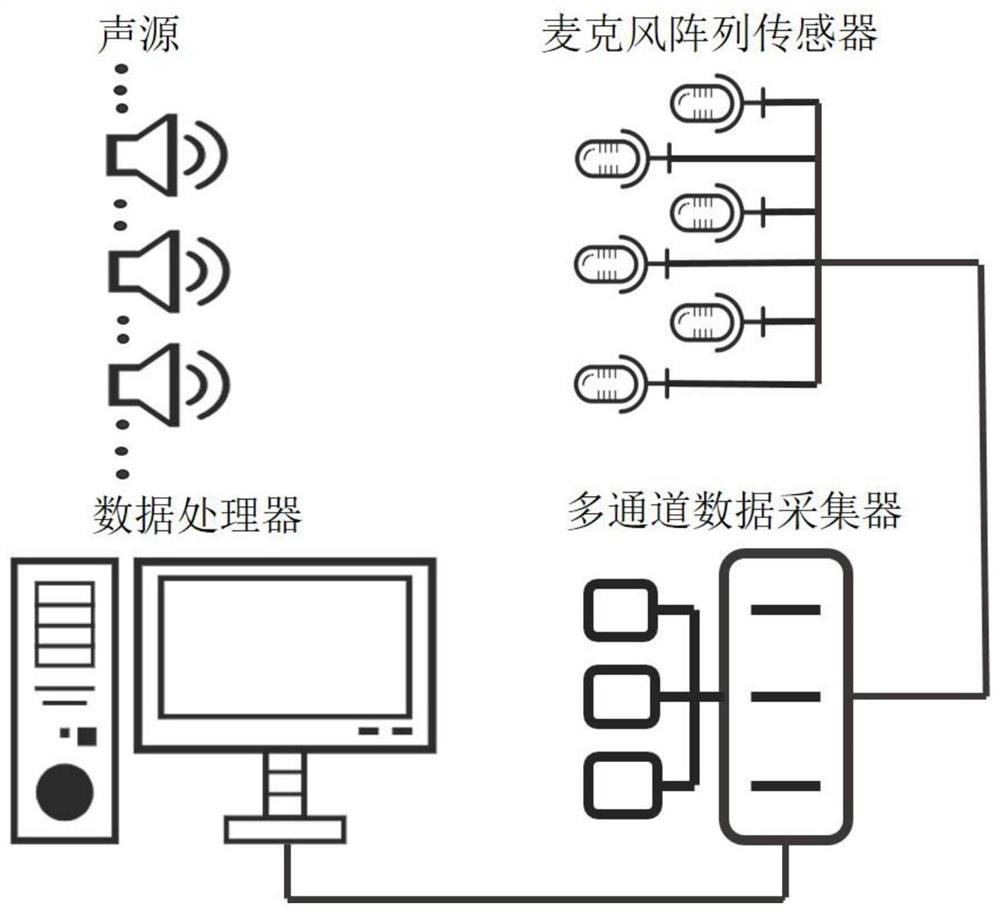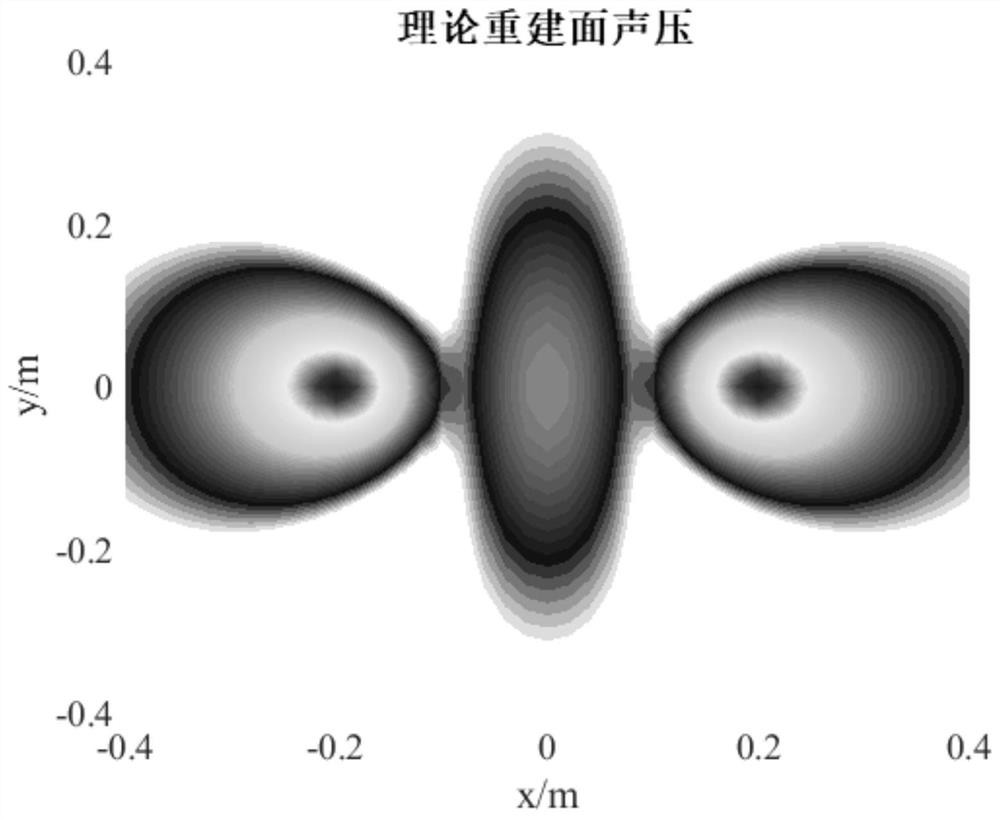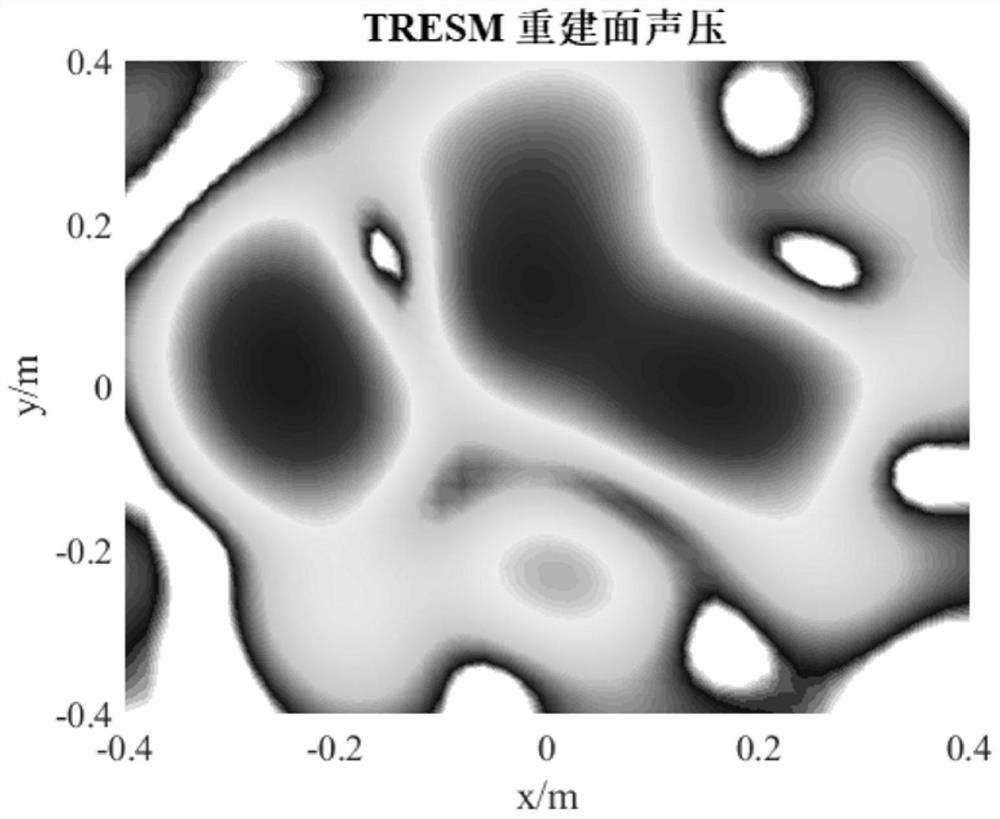Sound source identification method based on Bayesian compressed sensing
A technology of Bayesian compression and sound source identification, which is applied to the measurement of ultrasonic/sonic/infrasonic waves, speech analysis, instruments, etc., and can solve problems such as unstable reconstruction performance
- Summary
- Abstract
- Description
- Claims
- Application Information
AI Technical Summary
Problems solved by technology
Method used
Image
Examples
Embodiment 1
[0075] see Figure 1 to Figure 6 , a sound source recognition method based on Bayesian compressed sensing, comprising the following steps:
[0076] 1) Build a sound source recognition system based on Bayesian compressed sensing, including a microphone array sensor, a multi-channel data collector and a data processor. The microphone array sensor includes M microphones distributed in the sound source detection space.
[0077] 2) Each microphone separately monitors the time-domain analog sound pressure signals of N equivalent sound sources, and sends them to a multi-channel data collector at the same time. The N equivalent sound sources are distributed around the sound source.
[0078] 3) The multi-channel data collector converts the received time-domain analog sound pressure signal into a digital sound pressure signal p, and sends it to the data processor.
[0079] 4) The data processor establishes a sound source identification model, and obtains a transfer matrix A between t...
Embodiment 2
[0137] A sound source recognition method based on Bayesian compressed sensing, comprising the following steps:
[0138] 1) Build a sound source recognition system based on Bayesian compressed sensing, including a microphone array sensor, a multi-channel data collector and a data processor. The microphone array sensor includes M microphones distributed in the sound source detection space.
[0139] 2) Each microphone separately monitors the time-domain analog sound pressure signals of N equivalent sound sources, and sends them to a multi-channel data collector at the same time. The N equivalent sound sources are distributed around the sound source.
[0140] 3) The multi-channel data collector converts the received time-domain analog sound pressure signal into a digital sound pressure signal p, and sends it to the data processor.
[0141] 4) The data processor establishes a sound source identification model, and obtains a transfer matrix A between the sound source and the micro...
Embodiment 3
[0147] A method for identifying a sound source based on Bayesian compressed sensing, the main steps of which are shown in Embodiment 2, wherein the main steps of establishing the transfer matrix A between the sound source and the microphone array sensor are as follows:
[0148] 1) Determine the sound pressure signal p(m) measured by the mth microphone as follows:
[0149]
[0150] In the formula, m=1,2,...,M. is the free-field Green's function. k is the wave number, is the distance from the equivalent source to the measurement surface. q n is the sound source intensity of the virtual equivalent source.
[0151] 2) Formula (1) is expressed in the form of vector matrix, namely:
[0152] p = Aq. (2)
[0153] In the formula, A is the M×N dimensional sound field transfer matrix. p is the M-dimensional sound pressure vector, and its elements are the single-block beat signals of the corresponding sensors. q is an N-dimensional sound source intensity column vector, and i...
PUM
 Login to View More
Login to View More Abstract
Description
Claims
Application Information
 Login to View More
Login to View More - R&D
- Intellectual Property
- Life Sciences
- Materials
- Tech Scout
- Unparalleled Data Quality
- Higher Quality Content
- 60% Fewer Hallucinations
Browse by: Latest US Patents, China's latest patents, Technical Efficacy Thesaurus, Application Domain, Technology Topic, Popular Technical Reports.
© 2025 PatSnap. All rights reserved.Legal|Privacy policy|Modern Slavery Act Transparency Statement|Sitemap|About US| Contact US: help@patsnap.com



